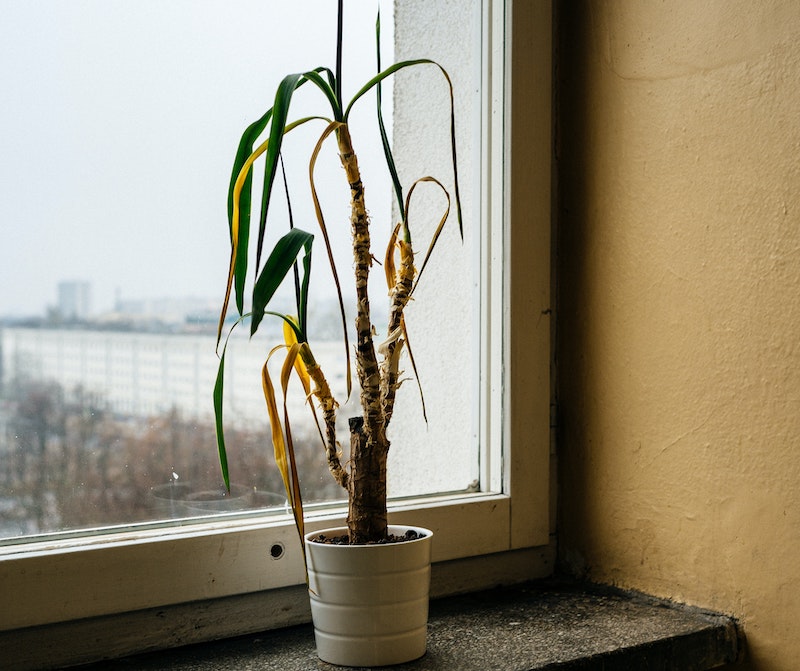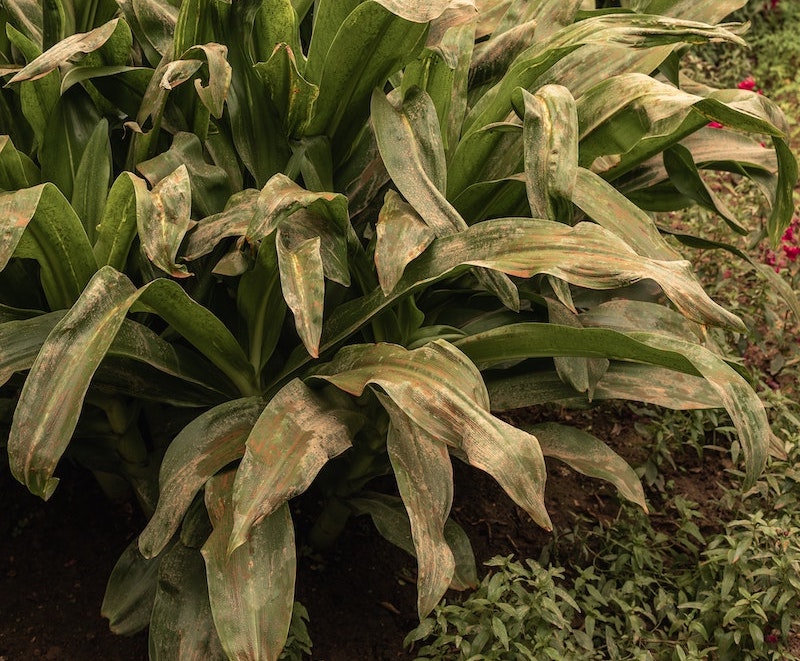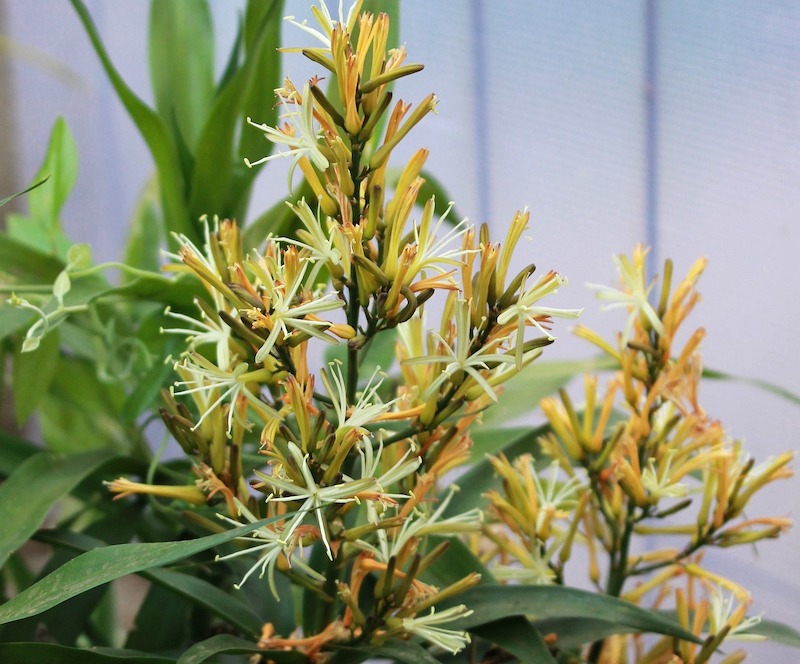Dracaena Is Dying
In an ideal environment, tropical Dracaena flourishes. Optimal conditions include bright indirect light, temperatures between 70 to 80 degrees, and 60 to 80 percent humidity. Loamy, acidic, well-draining soil is another key to its success. Drought-tolerant Dracaena is susceptible to fungal disease due to overly moist soil. Amend poorly draining soil with perlite or grit and water only when the top one or two inches of soil are dry. Providing well-draining soil and watering only when needed should keep root rot at bay.
Of course, even in paradise, things can still go wrong. If you notice any changes in your Dracaena’s growth, take a closer look. Do you spot curling, yellowing, wilting, or deformed foliage? Yellowing leaves are most likely due to too much moisture, either from overwatering or poorly draining soil. If the leaves are deformed, though? Pests or diseases are more likely the problem.

Dracaena Leaves Turning Yellow
Don't worry if you eye Dracaena dropping an occasional yellowing leaf. Leaves turning yellow and dying are part of this plant's normal life cycle. This lovely houseplant grows at the top of its stems, where the crowns of leaves are located. To make room for new leaves, the plant sheds its old ones. If you notice young leaves suddenly turning yellow, examine the plant and the soil. Most likely, the problem is overwatering or inadequate substrate. If the soil is damp, wait to water again until the top one to two inches is completely dry. If the soil is overly saturated and does not seem to be drying appropriately, the soil may not be draining properly, or the pot has inadequate draining holes. Amend the soil with peat moss, perlite, or grit to improve drainage, and transplant your plant to a new container with adequate drainage holes if needed.

Dracaena Pests
Is an insect a friend or foe? Lady bugs? Welcome! Scales, mealy bugs, and mites? Say goodbye. Waxy bumps on the back of the leaves are scale insects. Clusters of white eggs indicate mealy bugs, while the appearance of webs is the work of spider mites. These pawns suck essential fluids from Dracaena, causing damage that, if not stopped, can result in yellowing, deformed, and dying leaves, and stunted growth.
To stop these little pests from continuing their damage spree, remove them by spraying the plant with water and cleaning the foliage with a damp cloth. If spraying and wiping does not solve the problem, apply an insecticidal soap once a week. Another good option is to treat the plant with a horticultural oil such as Neem oil.
Dracaena Diseases
Three threats challenging Dracaena’s good health are root rot, fungal leaf spot, and soft rot. For Dracaena to grow, its roots must draw sufficient moisture from the soil and transport it through the stems to its leaf crowns. If the soil is too saturated, either from over-watering or poor drainage, the roots may suffocate and die, while fungi living in the soil flourish, causing parts of the plant to turn brownish black and become soft. In the case of fungal leaf spot, too much moisture on the foliage creates the ideal conditions for fungi to grow. Dark spots with paler centers form on the foliage. Soft rot, by contrast, is typically caused by bacteria; the plant begins to display symptoms similar to those of root rot, with the lower part of the plant turning dark and soft.

Dracaena Not Blooming
The plant may bloom indoors, but it will only do so after a considerable aging period. Don’t be surprised to wait five to ten years before seeing its delicate fragrant flower clusters. To encourage the rare event, you must match the indoor conditions as closely as possible to its natural habitat. This ideal environment consists of bright indirect light, 60 to 80 percent humidity, and moderate amounts of water.
 |
Author Suellen Barnes - Published 4-06-2023 |
